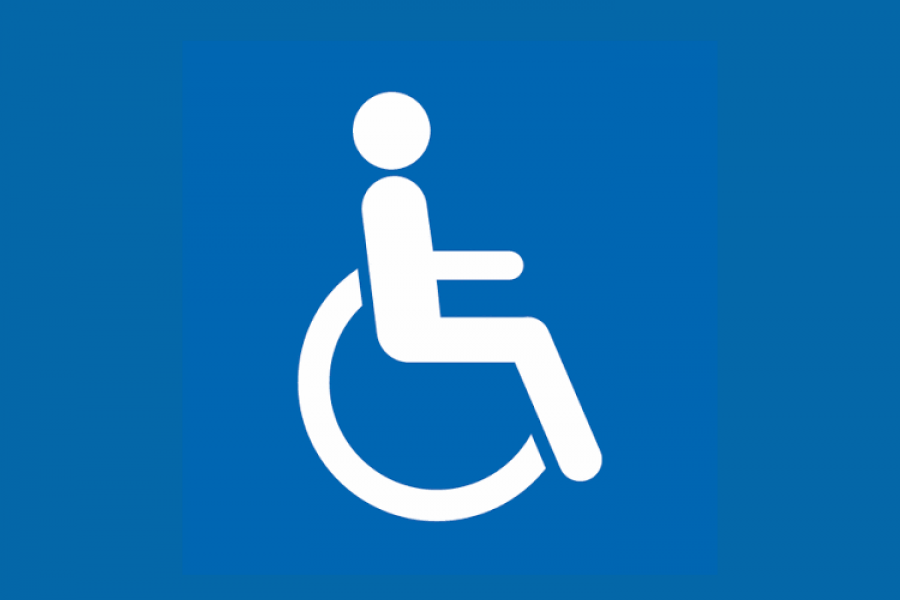THE AMERICANS WITH DISABILITIES ACT (ADA) is a landmark piece of civil rights legislation that prohibits discrimination based on a disability and guarantees equal opportunity for people with disabilities. Signed into law in 1990 under President George H.W. Bush, the ADA has changed the lives of millions of disabled Americans who can now engage in regular day-to-day activities after having been previously marginalized because of their disabilities or special needs.
Since the inception of the ADA and the introduction of Title III, which specifies rules to ensure the equal enjoyment of public accommodations, many hoteliers have studiously built or made the necessary capital improvements on their properties to ensure individuals with disabilities are able to freely enjoy their facilities in the spirit of the law. Despite these earnest attempts, hoteliers have also become accustomed to being the target of lawsuits that claim a violation of the ADA.
HOTELS CAN BE TARGETS
.jpg)
In the past, as hoteliers scrambled to understand the law and implement changes, serial plaintiffs would target hotels for issues with their physical plant that might not adhere to the ADA. For example, parking spots not being handicapped accessible, or those notorious pool lifts not being installed, or even extreme examples of plaintiffs pulling out a measuring tape to ensure that grab bars are installed to the specification were common legal complaints hoteliers faced. As these so-called "drive-by" lawsuits have been exhausted and hotels have mostly become compliant physically, attorneys are becoming more sophisticated and steering their focus to what we are calling "click-by" lawsuits.
34% YoY growth of Title III lawsuits filed in federal court (2017 vs. 2018)
A spate of lawsuits is being filed accusing hotel websites of not being ADA compliant. Some recent statistics published by the Attorney's Office of Seyforth Shaw, LLP, which specializes in ADA Title III litigation, show the number of Title III lawsuits filed in federal court in 2018 hit a record high of 10,163 – up 34 percent from 2017. Some 20 percent of these suits revolve around hotel website accessibility, which exploded nearly 200 percent from 2017. Click-by ADA lawsuits are growing as a portion of all ADA Title III federal suits, thereby demonstrating a change in focus by serial litigants from targeting physical violations to going after digital ones.
So, how can hoteliers protect themselves from one of these click-by lawsuits while ensuring that their websites and online presence cater to individuals with accessibility requirements?

First and foremost, hoteliers need to ensure their hotel’s physical plant is compliant with local building codes and the ADA. An easy guide to ensure compliance is to print the ADA Checklist provided by the Department of Justice (www.ada.gov/hsurvey.htm), perform an audit of your facilities and remediate any faults.
Many hoteliers are also opting to have a Certified Accessibility Specialist (CAS) professionally assess the accessibility of their physical plant and make recommendations to ensure compliance with the ADA.
With either approach, it is vitally important to ensure the property itself is physically compliant with the law.
1. Modify its policies, practices, or procedures to ensure that individuals with disabilities can make reservations for accessible guest rooms during the same hours and in the same manner as individuals who do not need accessible rooms;
2. Identify and describe accessible features of the place of lodging and guest rooms offered through its reservations system in enough detail to reasonably permit individuals with disabilities to assess independently whether a given place of lodging or guest room meets his/her accessibility needs;
3. Ensure that accessible guest rooms are held for use by individuals with disabilities until all other guest rooms of that type have been rented and the accessible room requested is the only remaining room of that type;
4. Reserve, upon request, accessible guest rooms or specific types of guest rooms and ensure that the guest rooms requested are blocked and removed from all reservations systems; and
5. Guarantee that the specific accessible guest room reserved through its reservations system is held for the reserving guest, regardless of whether a specific room is held in response to reservations made by others.
Ensuring that your hotel’s website is ADA Title III compliant is fairly easy and straightforward. The accessibility features of your property, guest rooms, and bathrooms should be detailed comprehensively online, and the bookability of accessible room types should be availed.
These points can be accomplished by utilizing a Content Management System that offers the ability to highlight all accessibility features at the property level, guest room, and guest bathroom levels.
Additionally, it is imperative that your PMS and booking engine are able to highlight in-room accessibility amenities and manage room inventory. It is recommended that these points be followed across not only your hotel’s website itself but also online travel agents and franchise websites.

The Web Content Accessibility Guidelines (WCAG) 2.0 are set forth to make content on your website easy to read, operate, and understand, making your hotel’s website technology accessible. At the most basic level, your hotel website should have these (and other accessible elements):
Provides text alternatives for any non-text content;
Provides alternatives for time-based media;
Includes content that can be presented in different ways without losing information or structure;
It is easy to see and hear, including separating foreground from the background;
Permits all functionality from a keyboard, if needed (as opposed to a cursor);
Permits sufficient time to read and use content;
It is not designed in a way that is known to cause seizures;
Includes ways to help users navigate, find content, and determine where they are;
Includes text content that is readable and understandable;
Operates and appears in predictable ways;
It helps users avoid and correct mistakes; and
Is compatible with current and future user agents, including assistive web technologies.
Coding or recoding your hotel’s website to conform with WCAG 2.0 at a Level AA standard so it can be consumed by assistive technologies that can parse and read the website could potentially be cumbersome and requires technical aptitude that can be costly. So, gone are the days of doing it yourself using an out-of-the-box website template solution. It also behooves you to avoid web designers who have no clue about the regulations and requirements necessary for hospitality businesses.
It is recommended you rely on a proven digital marketing platform, tuned for hotels to power your website, are forward-looking, and can easily adapt to any changes in the law, thereby reducing your exposure to click-by lawsuits.
"So, you’ve done everything to ensure your hotel property is physically compliant. Now, what does it mean to be ADA compliant online?"

So, you’ve done everything to ensure your hotel property is physically compliant. Now, what does it mean to be ADA compliant online?
There is considerable confusion as to what "online hotel accessibility" really means. There are two aspects to ensuring your digital presence is accessible.
First, your hotel’s online presence must adhere to Section 36.302e of ADA Title III regulations, also dubbed "The 2010 Regulations," which went into effect March 15, 2012, imposing new obligations on owners and operators of hotels motels and other places of lodging. This key piece of legislation states that your hotel’s online content on your website, OTAs, and franchise sites must comprehensively describe in-room and property-level accessible features.
Additionally, your reservations system, specifically accessible guest room inventory, must be accessible to all travelers irrespective of any special needs and cannot discriminate against any guests with a disability. The focus of the law is very clear and detailed in what could be called "The Five Points," which are detailed on page 35.
The majority of click-by lawsuits stem directly from hoteliers not following "The Five Points," but these lawsuits are just the tip of the iceberg, for what lurks below the murky waters is the second point of online accessibility, which is now also being challenged in courts: website content accessibility.
While stringent standards for a hotel website’s accessibility compliance have not been adopted to date, it is increasingly important to ensure your hotel’s website conforms to coding standards that ensure website content can be consumed by individuals who have audio, visual, or mobility impairment.
The World Wide Web Consortium (W3C) is an international community that works together to develop web standards. W3C has established what is called the Web Accessibility Initiative (WAI). This initiative brings together organizations and governments from around the world "to develop guidelines and resources to help make the web accessible to people with disabilities including auditory, cognitive, neurological, physical, speech, and visual disabilities."
The WAI has developed Web Content Accessibility Guidelines (WCAG), which are recommendations and guidelines to make web content more accessible. The most widely accepted guidelines are the second iteration, WCAG 2.0. Increasingly, the courts are beginning to leverage WAI and WCAG standards in establishing policies regarding website accessibility, and, while the DOJ has not determined formal rules or policies in respect to website accessibility, the DOJ and several court cases that have been adjudicated have been insisting (without any statutes or regulation) that websites and mobile application be brought in compliance with WCAG 2.0 AA.



 Okay, Keep Reading our Blogs and gain
insights!
Okay, Keep Reading our Blogs and gain
insights!


 Okay, Keep Reading our Blogs and gain insights!
Okay, Keep Reading our Blogs and gain insights!
If you want our team at INNsight.com to help you get your Website ADA compliant and generate massive amount of traffic with Direct Bookings.



Copyright © 2017- 2025 | Patent-Pending
